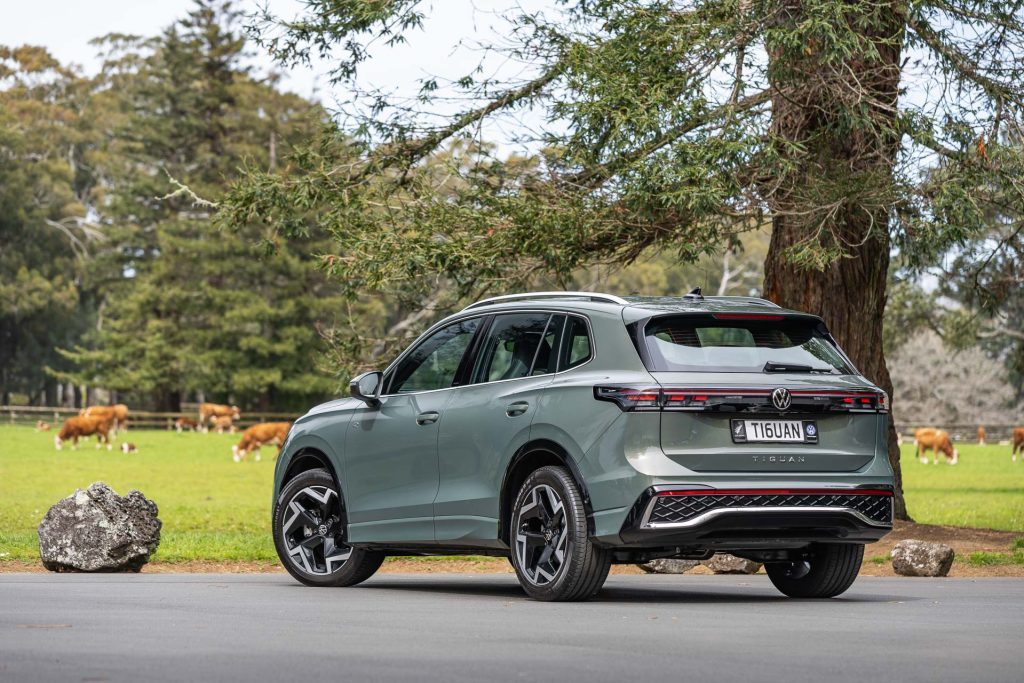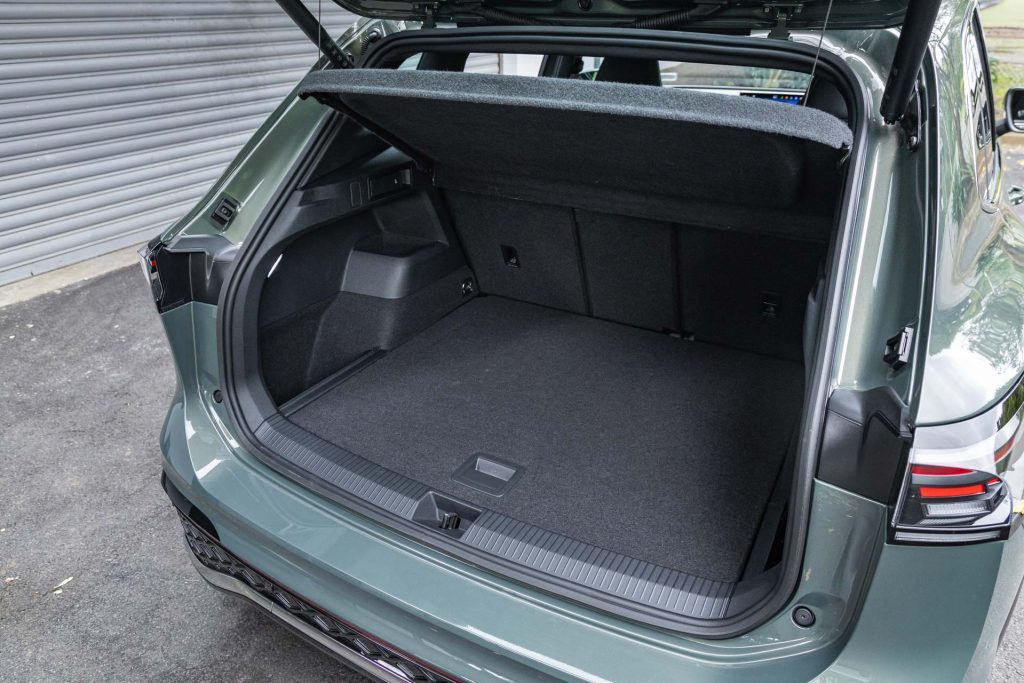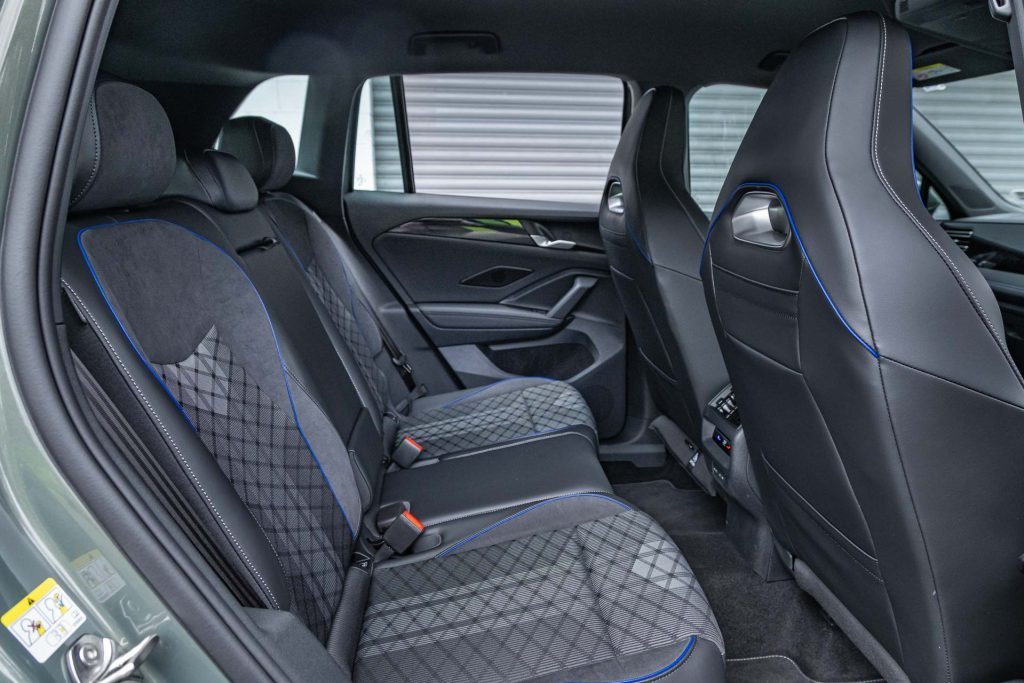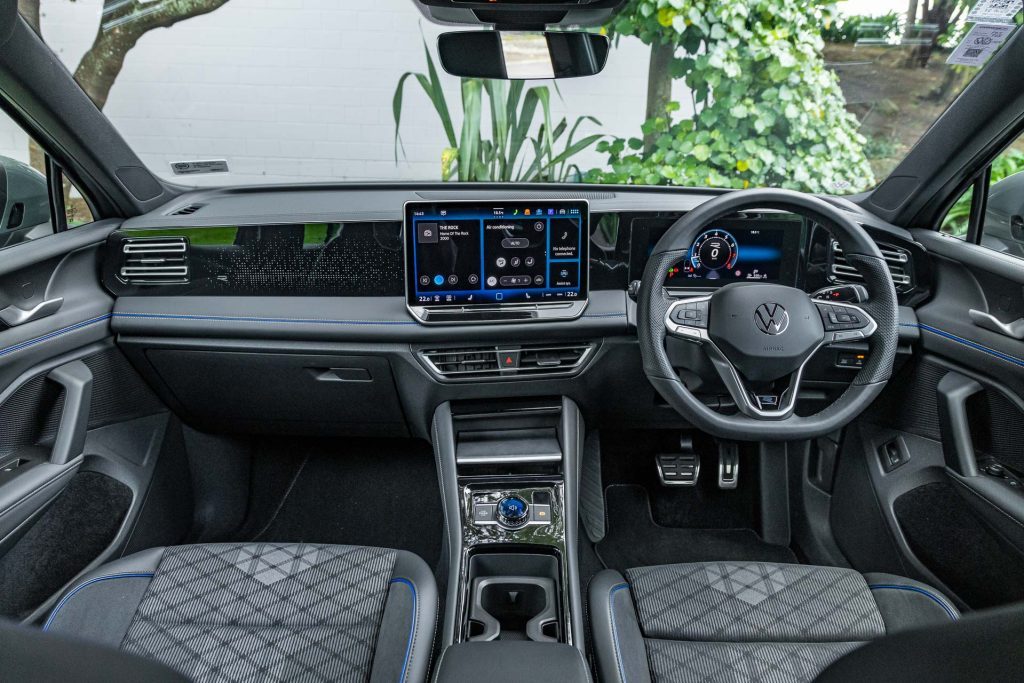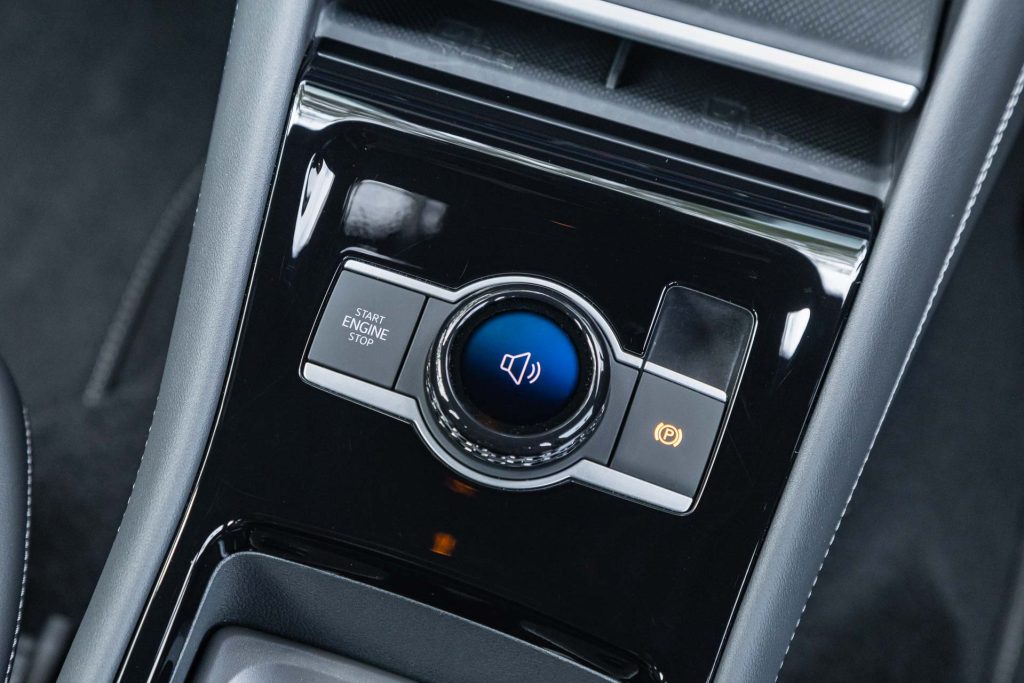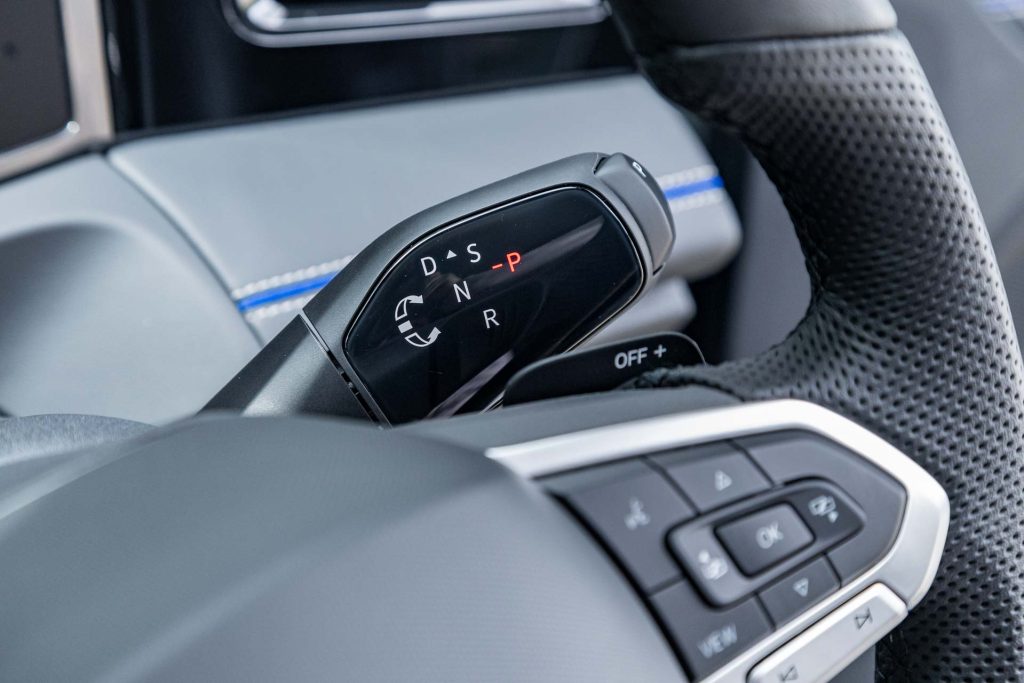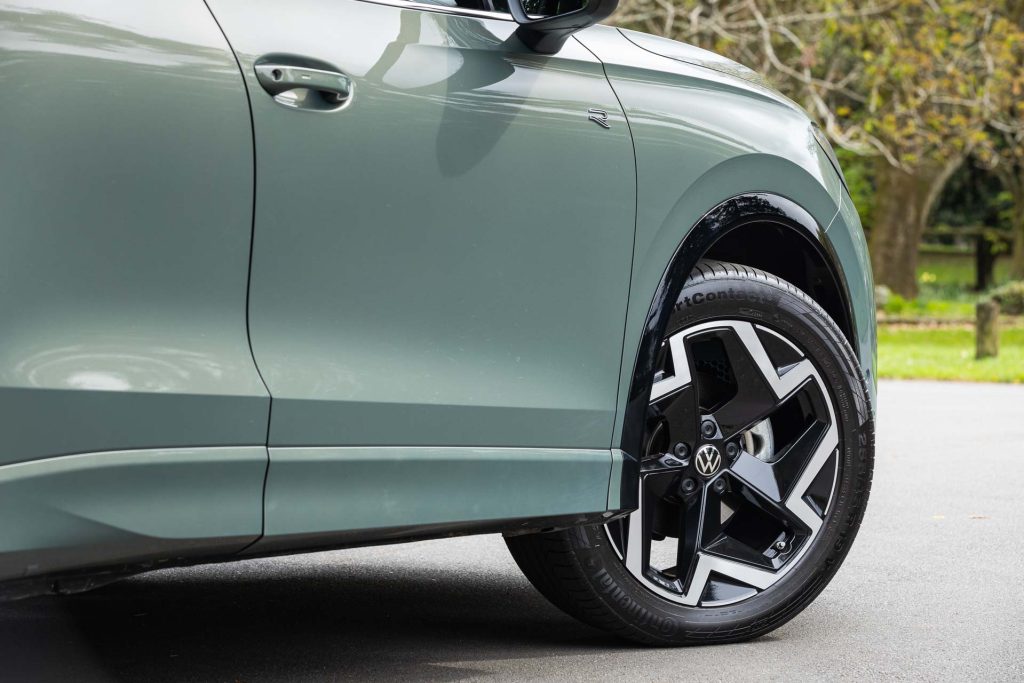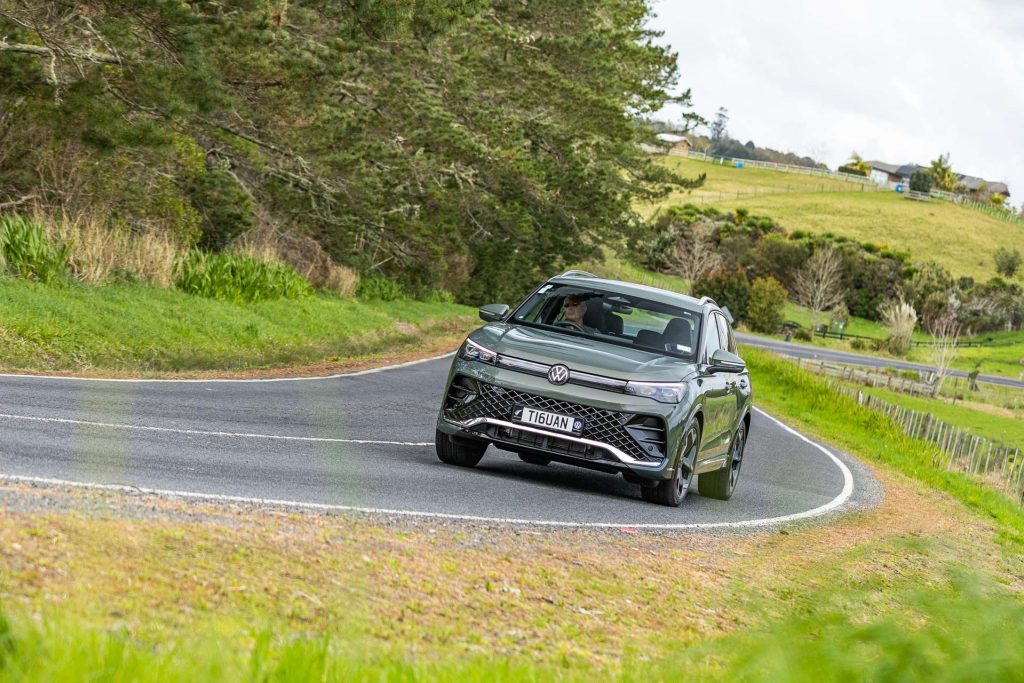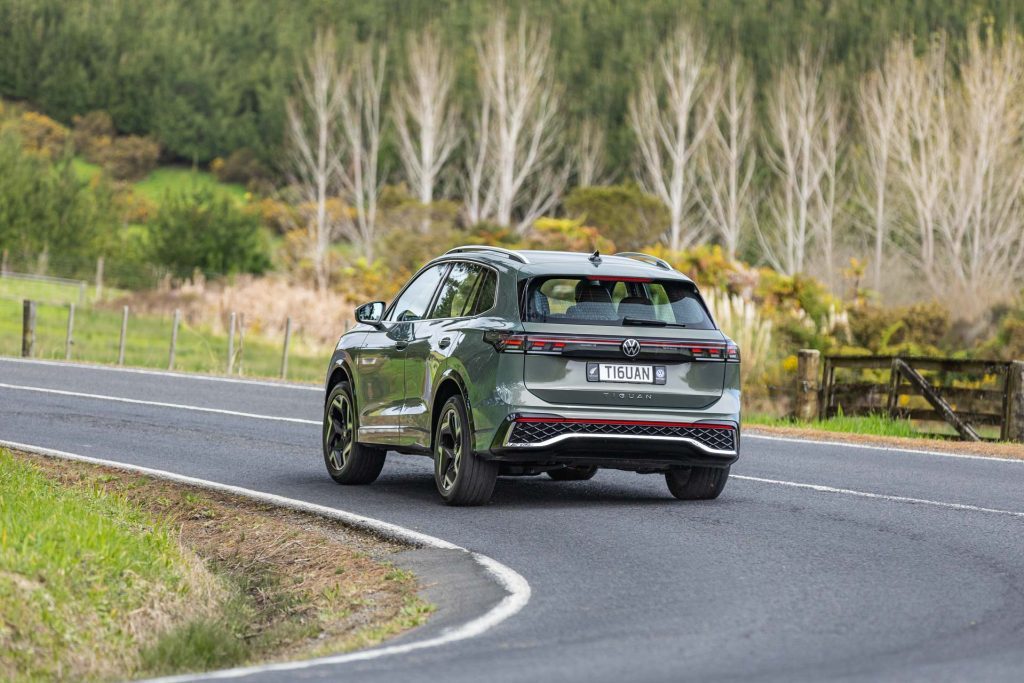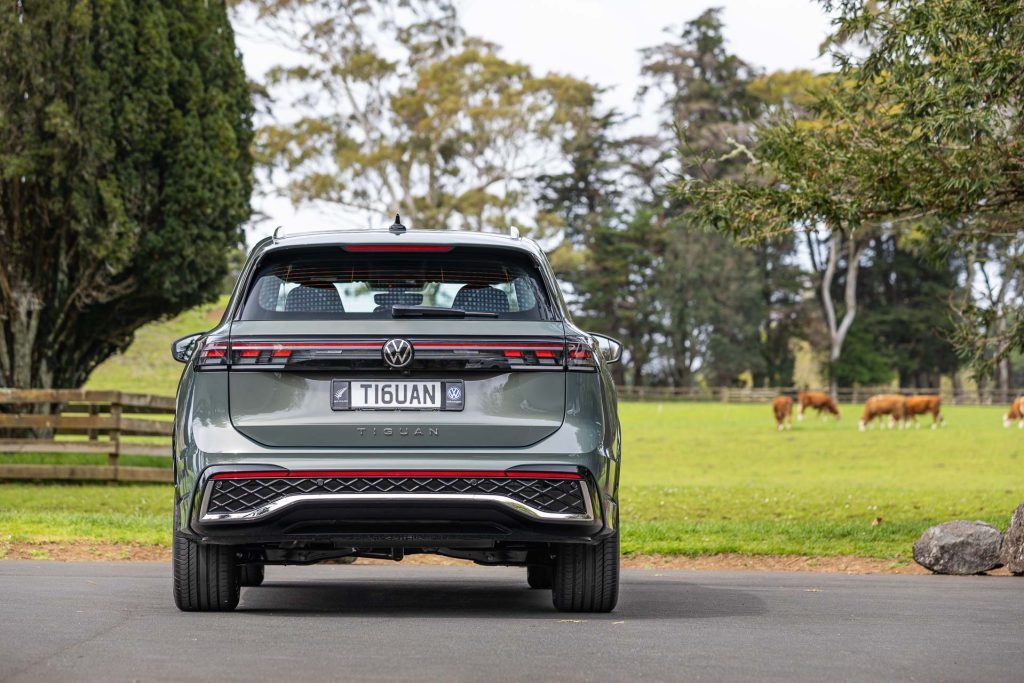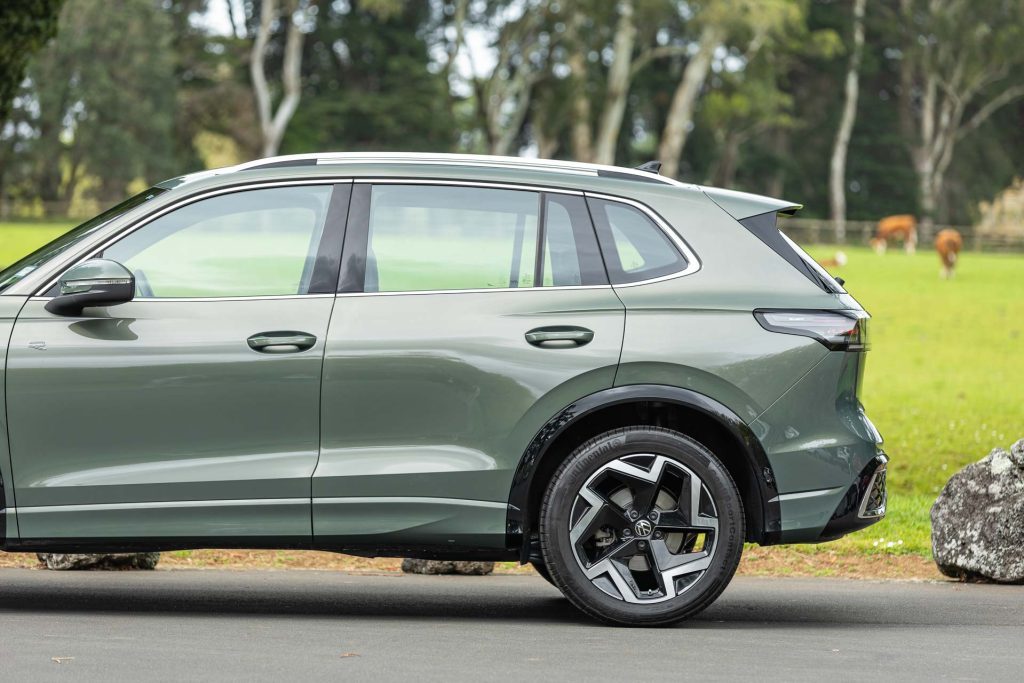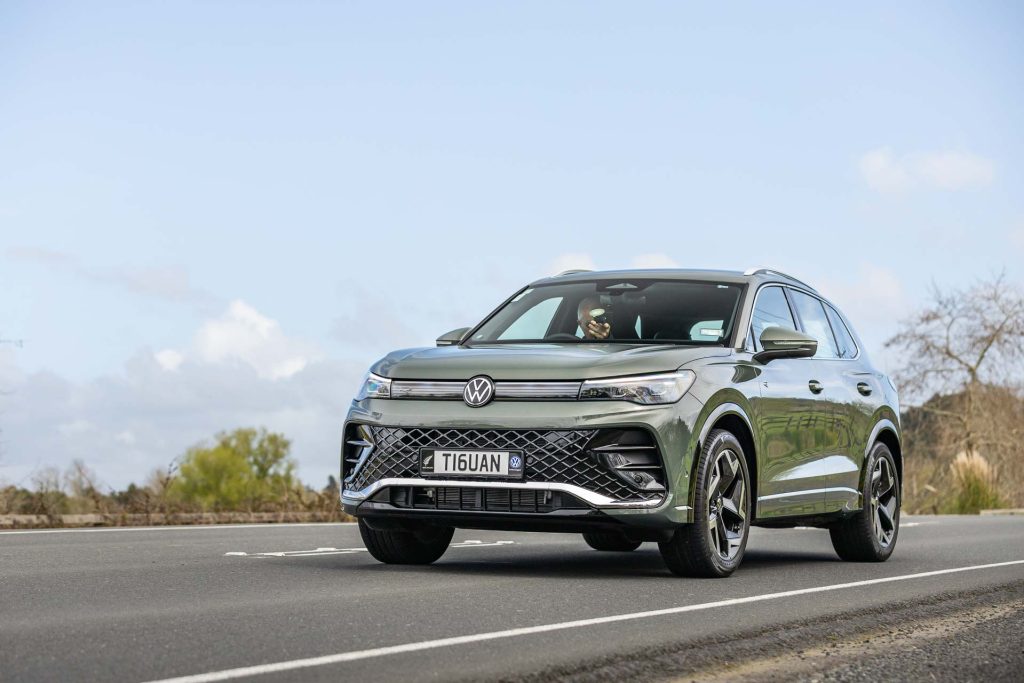2024 Volkwagen Tiguan R-Line review
The latest Tiguan, now at its third generation, has a more assertive look, and added tech. We drive the upmarket R-Line.

Driving home around the city-fringe precinct in the latest Tiguan, admittedly just after school’s out, I passed three others in one street, and another parked just around the corner.
So I figured this must have the X-factor for modern families. Does it then?
Globally the Tiguan is essentially the modern equivalent of the VW Golf. Not quite so outrageously successful as that perhaps, but then it hasn’t been going for as long either. It only debuted in 2007, so is 17 years young.
But over 7.6m of them have been sold in that time. Moreover, since 2018, Volkswagen’s Tiguan has been the best-selling model of the entire Volkswagen Group.
Bolder look
The new, third-generation Tiguan combines “progressive technologies with charismatic design”. It has a more aggressive front end with its black honeycomb grille, and looks interesting at the far end too.
Chrome highlights on our R-line model work well. Unlike some VWs where the circular badge at the rear activates the powered fifth door, this one has a conventional hidden latch.
Still, the powered door reveals a roomy boot with a sensible layout. The floor height is fixed but underneath is a space-saver spare, an increasing rarity.
Practical for people and gear
We’d ridden our e-bike to pick this up so removed the cargo cover, easily done, and the front wheel of the bike after splitting and folding the back seats over.
This has pull tabs down low, rather than latches up high. En route home, I heard the front axle bolt roll into a cavity and had a sinking feeling. But on arrival I discovered that the rear seats slide fore and aft.
Pushing the right rear seat fully forward, there was the axle bolt, so clever design VW. Not so clever bolt security on my part. This is a five-seater so can be configured easily enough for extra load carrying or for transporting lanky teens and the like.
Just move the rear seats accordingly. Volkswagen reckons on 652L of luggage space with all five seats in use, and 1650L after split folding.
It remains a family friendly ride then, with loads of room for all occupants. There are the requisite child seat Isofix latches too.
Smarter cabin styles
Up front it’s rather flasher than before. New and on the right side of the steering column is the gear shifter that you twist or rotate forwards for D and backwards for R.
You push the button on the end to select P which also activates the electronic handbrake. Towards the passenger side in the centre console is a non-descript starter button.
Clearly this was conveniently sited for left-hook markets and unchanged for our’s but it’s not such a stretch. A large circular volume control surrounds the drive mode button. Above this is a Qi charger, atop of which is a rubber-lined oddments tray. Very practical.
It’s all a bit flash in here, with few hard plastics, lots of piano black finishings. And trim that’s backlit with LEDs for the ambience. The front seats that are manually operated have a lower back massage function.
I preferred lumbar just set to full but that’s just bad-back me. The passenger side’s back rest knob was nowhere to be seen, and had presumably been rotated off.
Our car had done 2000km and had a couple of buzzes in the cabin, hard to locate but a little disappointing given the suspension compliance.
Normally rattles and buzzing are more common in cars with sports suspension.
Think Golf-like dynamics
This is quite a sizeable vehicle, at 4.7m, but doesn’t weigh that much at 1483kg. Compared with the not-much-longer GLE 450 we’d just been driving, this is a positive lightweight, and it feels almost Golf-like in its general demeanour.
That shouldn’t really surprise because it utilises the latest evolution of the MQB Evo platform, as do most of VW’s small- to medium-sized offerings (like Golf).
On the ride and handling fronts, the engineers seem to have nailed this well. Ride comfort is grand despite suspension being fixed and the driving position plenty adjustable, visibility tops.
It rounds up corners nicely enough too, the steering light and understeer progressively building as you press towards the grip limits.
The rubber is well chosen, with reassuring grip in the dry but it’s never too vocal, the top SPL reading under 71dB on our reference piece of uncivilised chipseal. The hoops are ContiSportContact 5, of the 255/45R19 persuasion each end.
Enough go for the job
And the key mechanicals are familiar, for it also shares the 1.4T engine found in most everything small to medium Volkswagen that isn’t electric these days.
So there’s 110kW and 250Nm and that’s enough for round town ease of running, the Tiguan quietly energetic in its default Comfort mode.
Out of town we preferred Sport because it suited performance better without being all too frantic. And on the performance front there’s not exactly an excess, especially for something costing $61,490.
That said, it’s sufficient, getting by fine and economy/emission is always on the minds of car makers nowadays, especially for family vehicles.
The base Life model has the same running gear but without quite the R-line level of spec goes for $54,490.
In each case that’s a lift of around $3k from the outgoing generation, not bad given added gear. And on that, this now has a seventh cog where the previous generation had just six.
It’s almost laughable that this features launch control. Without it the 9.2sec sprint time would have been above 10sec, and bear in mind this has a quick-shifting twin-clutch transmission as well.
The overtake shows the real-world performance limitations, requiring 7.10sec for that, or just over 200m. For all that, it never seems shy on the go front. And while we occasionally mussed with the paddles, you don’t really need to.
Nor does the transmission hold gears to ridiculous rev levels in Sport mode, which is why it works fine out of town. In Comfort, it always seems to be upshifting to keep engine revs low and with that gas use. And that works well in urban settings.
Not that we saw exactly amazing fuel consumption figures but then this isn’t a mild hybrid. It’s not a hybrid of any sort in fact.
Figure on 7s to 11s or at least that was what the computer was telling us after mainly rural running.
On another trip at the legal limit largely under cruise control, we saw 6.5L/100km, which isn’t bad considering its size. VW reckons the combined figure is 8.5L/100km so our figures roughly corroborate that.
Tiguan will tow too, and is rated to haul up to 1800kg braked.
Two models at the outset
While there are initially just the two models on offer, an R-Line AWD variant arrives in November, with the 2.0T engine.
It’s good for 195kW and 400Nm and replaces the outgoing R model. It’s not quite as potent but considerable less expensive at $79,490.
Back to the R-Line then and like most modern vehicles, the central touchscreen seems to control most items you might want to change. Or you can whistle up IDA, the Intelligent Digital Assistant. With AI, it will handle plenty of requests.
Otherwise, everything is really most intuitive. Items like lane departure and overspeed warning are easy to cancel, thankfully. Like any vehicle with premium aspirations, there’s a lot going on here but it doesn’t take long to acclimatise.
ACC can be used with or without autonomous lane keeping, easy enough to sort, and so too saving your fave radio stations. That’s not always the case with overseeing touchscreens.
Standard items on the Life model include LED headlights, ACC, traffic sign recognition, sat nav, 10-colour ambient lighting and three-zone climate air. There’s also a powered tailgate, wireless hook up for smartphones, and a 12.9-inch infotainment screen.
The R-line adds 19-inch alloy wheels, the R-Line Body Kit, Sports seats and steering wheel, LED Plus headlights and light bars, massaging front seats and 30-colour ambient lighting.
You can access the different ambient light colours easily enough by choosing various mood modes in the touchscreen. We liked the energised pink one best. Read into that what you will.
There’s also an optional Touring Package for those who opt for the R-line model.
It contains leather- clad heated and ventilated seats, power adjust for the front seats with memory function, a heated steering wheel, panoramic sunroof and Harman Kardon premium sounds.
So yes, we can see why it’s popular with city fringe families. The new model is sure to build on that.
Model
Volkswagen Tiguan R-Line
Price
$61,490
Engine
1395cc / IL4 / T / DI
Power
110kW@5000-6000rpm
Torque
250Nm@1500-3500rpm
Drivetrain
7-speed twin-clutch / FWD
Fuel Use
8.5L/100km
C02 Output
192g/km
0-100km/h
9.21sec
80-120km/h
7.10sec (201.5m)
100-0km/h
34.32m
Stability systems
ABS, ESP
Safety
AEB, ACC, BSM, LDW,
RCTA, ALK, AHB
Luggage Capacity
652-1650L
Tow rating
750kg (1800kg braked)
Fuel Capacity
60L
Service intervals
12 months/15,000 km
Warranty
5 years/150,000km
ANCAP rating
Not rated
Weight
1483kg (claimed)
This article first appeared in the October 2024 issue of NZ Autocar Magazine.
This article was originally published on autocar.co.nz
Also consider
